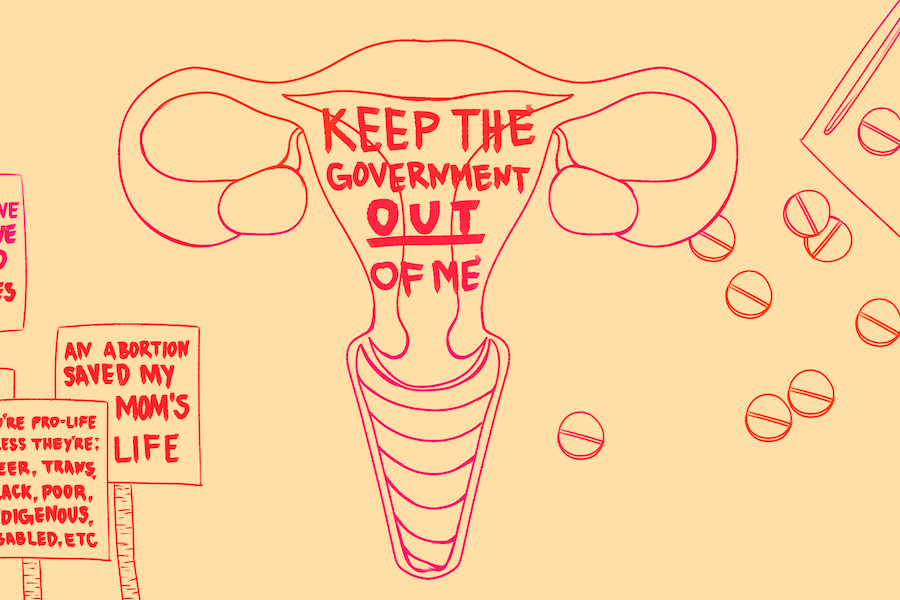Over the past few years, natural disasters caused by man-made climate change have wreaked havoc across the globe. Oregon has been included in the chaos with droughts, massive wildfires and wildly abnormal weather conditions battering the state.
Last year, Portland was hit with a “heat dome” event that turned the city into a furnace and killed many people. This event was an alarm bell that showed how unprepared Multnomah County is for the climate crisis. Another thing also became apparent: air conditioning has, can and will save lives.
Portland has historically had a temperate climate. Mild summers with highs in the 70s made air conditioning an optional luxury more than anything else. At the beginning of 2021, 79% of homes had air conditioning. This number may seem high, but is actually fairly low compared to Washington DC, Atlanta and New Orleans, which all have over 98% AC coverage. In short, Portland was unprepared for what was to come.
On June 26, 2021, the heat dome began with temperatures in Portland hitting an all-time high of 108°F. Records continued to be broken over the following days until June 29, when temperatures reached an unheard-of 116°F.
Eventually, the heat dissipated, leaving 72 deaths in Multnomah County and over 500 deaths across the Pacific Northwest and Western Canada. Most of these deaths were people who were low income, elderly and/or lived alone. A class divide was drawn in blood. Each one of these deaths would’ve been entirely preventable if air conditioning had been installed and available in all homes and cooling shelters for the houseless had been more abundant. Each death stands as a failure of a world ruined by capitalist greed and an apathetic government.

Environmentally conscious readers may be resistant to the mass adoption of AC considering the troubling history of air conditioning. This is a valid concern. Early AC units emitted enormous quantities of chlorofluorocarbons (CFCs) that nearly destroyed the ozone layer, while modern units produce hydrofluorocarbons (HFCs), greenhouse gasses thousands of times more effective than CO2 or methane.
23% of energy in the United States goes towards AC, much of which has harmful origins. Both of these issues are serious, but they can be addressed. Alternatives to HFCs are already in the works, while a vast restructuring of power generation is already a necessity for fighting climate change as a whole. Solutions are available—the only thing standing in the way is our profit-first system that disincentivizes a move away from fossil fuels.
Furthermore, AC was never the cause of climate devastation to begin with—the source is a system of capitalist exploitation by major corporations and governments. In the mess that they have made, the excuse of ACs being bad for the environment is not the answer to stopping it. Instead, ACs are needed to keep everyday people alive while new structures are formed that help mend the planet. Thankfully, a tiny legislative step was made earlier this year.
In March 2022, Oregon’s State Senate passed Senate Bill 1536. SB 1536 removes previous limitations on renters using AC and other cooling devices in their tenements from May to September, as well as requiring new buildings made to have AC preinstalled. A $2 million grant was included as well for the Department of Human Services to create emergency shelters for clean air and cooling, and to start AC dispersals.
This bill is a good step forward, but falls short of all that’s needed. Removing restrictions does nothing to help low income households who are unable to afford ACs in the first place. SB 1536 is another step that impacts new buildings instead of improving what is already here. Encouraging more gentrification is the last thing Oregon needs. Like most state-wide or national legislation, the measures are good but don’t go far enough fast enough for the times we live in.
Thankfully, Portlanders have another point of good news for air conditioning.
A voter-approved measure in 2018 created the Portland Clean Energy Fund (PCEF), an organization that OPB described as “a first-of-its-kind environmental justice program led by communities of color.” Part of the PCEF is the Heat Response Program, which aims to provide AC for those most in need, comprising low income BIPOC households, the elderly and people living with medical conditions that make the heat dangerous. The African American Alliance for Homeownership, one of seven community organizations funded by the Heat Response Program, installed its first AC unit last month. These seven organizations working with the PCEF plan to install 3,000 units by the end of the summer, with the end goal of 15,000 over the next five years.
Local community organizations backed by the city are ideal for addressing the issues of those often ignored by the powerful, and can be a rare point of hope in a pessimistic world. Still, these efforts must be maintained and expanded so that when the next crisis hits no one dies.
Air conditioning may not be perfect, but it can be the difference between life and death. In a changing world that has been ruined by greedy capitalists, the lives of the forgotten working class must come before profit. Changes to our infrastructure and societal structure are needed in order for humanity to survive. While these changes are made, lives must also be accounted for. Air conditioning—something that once seemed like a trivial luxury—is now a necessity in creating livable conditions moving forward.







